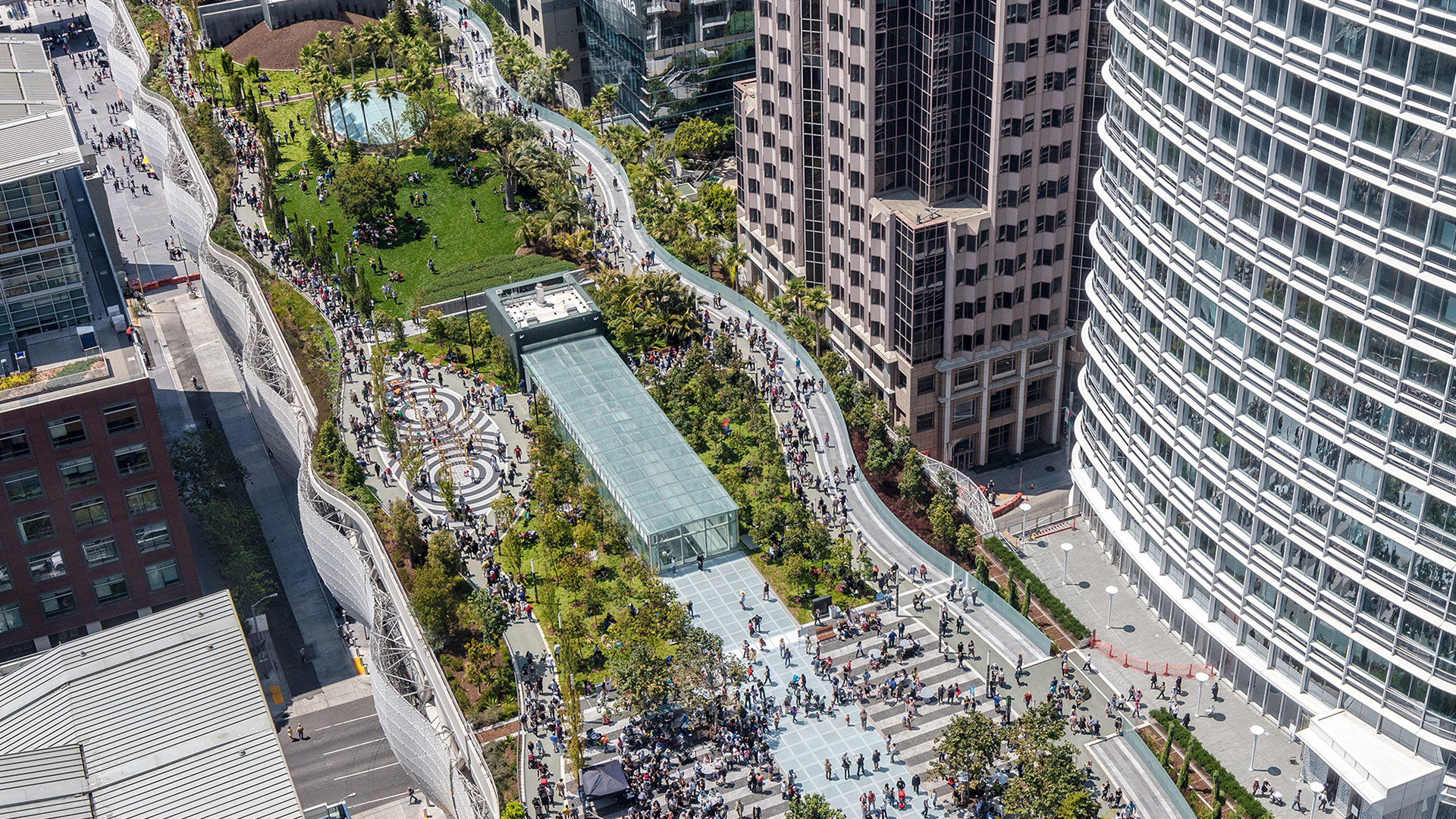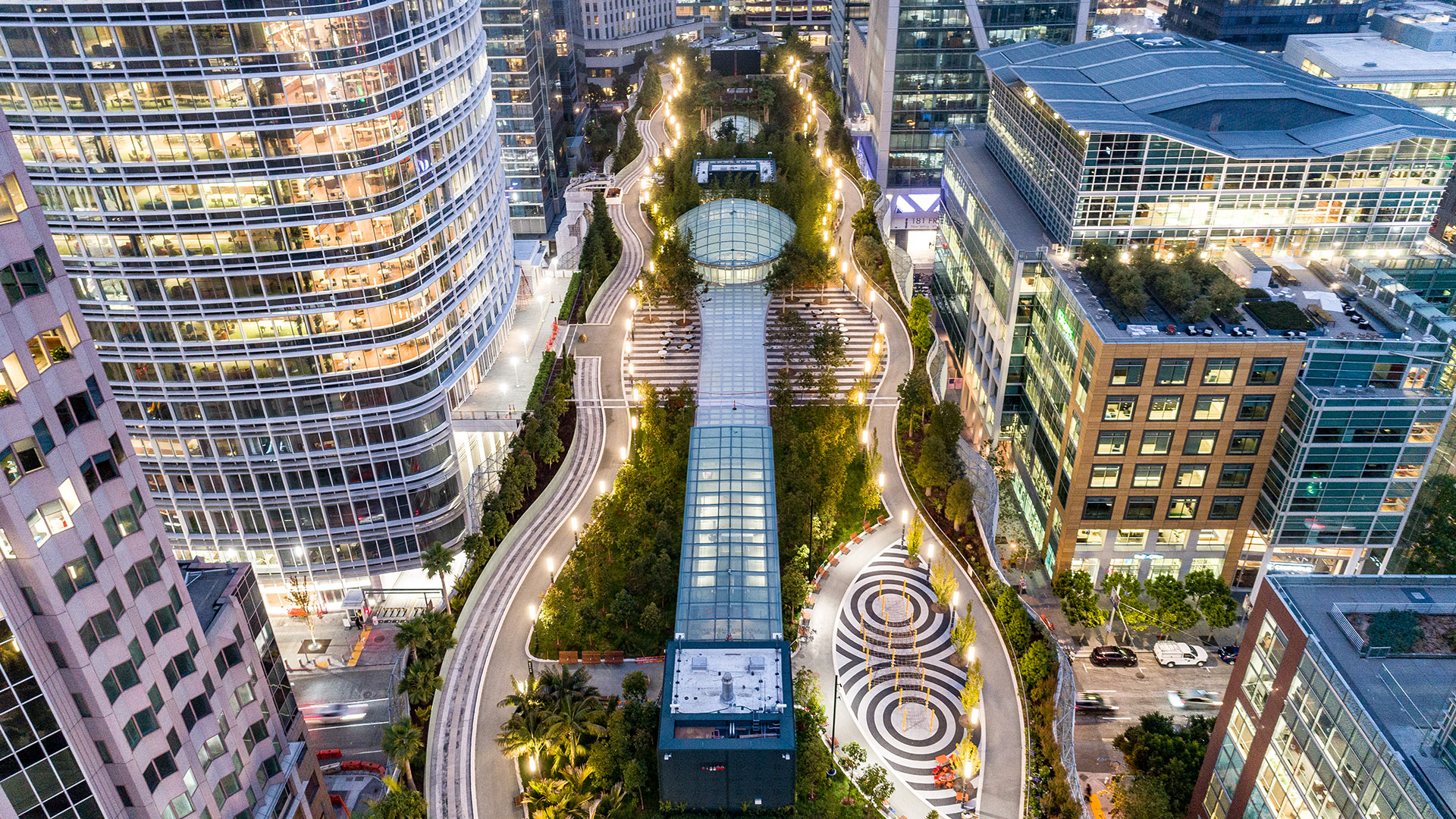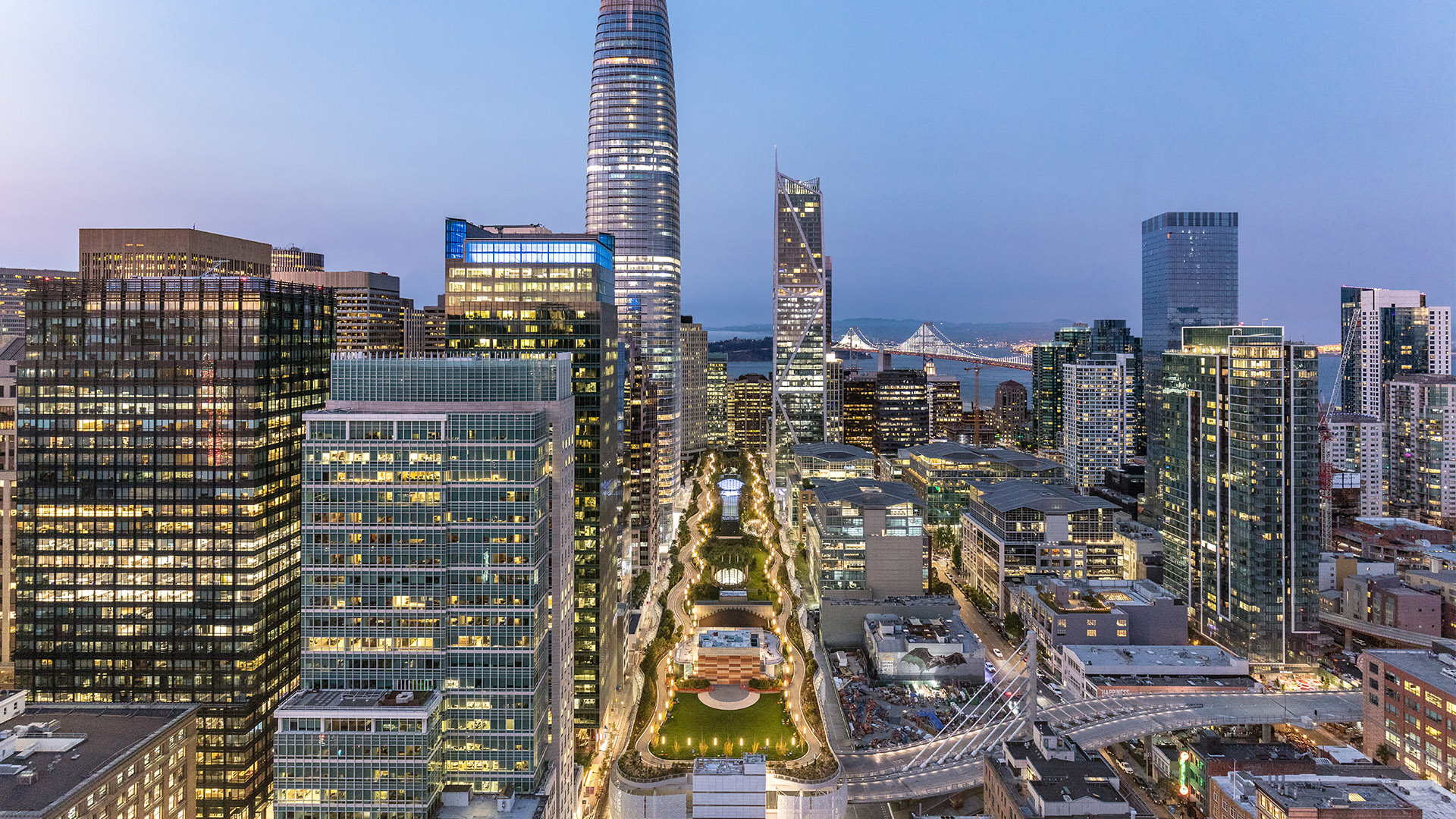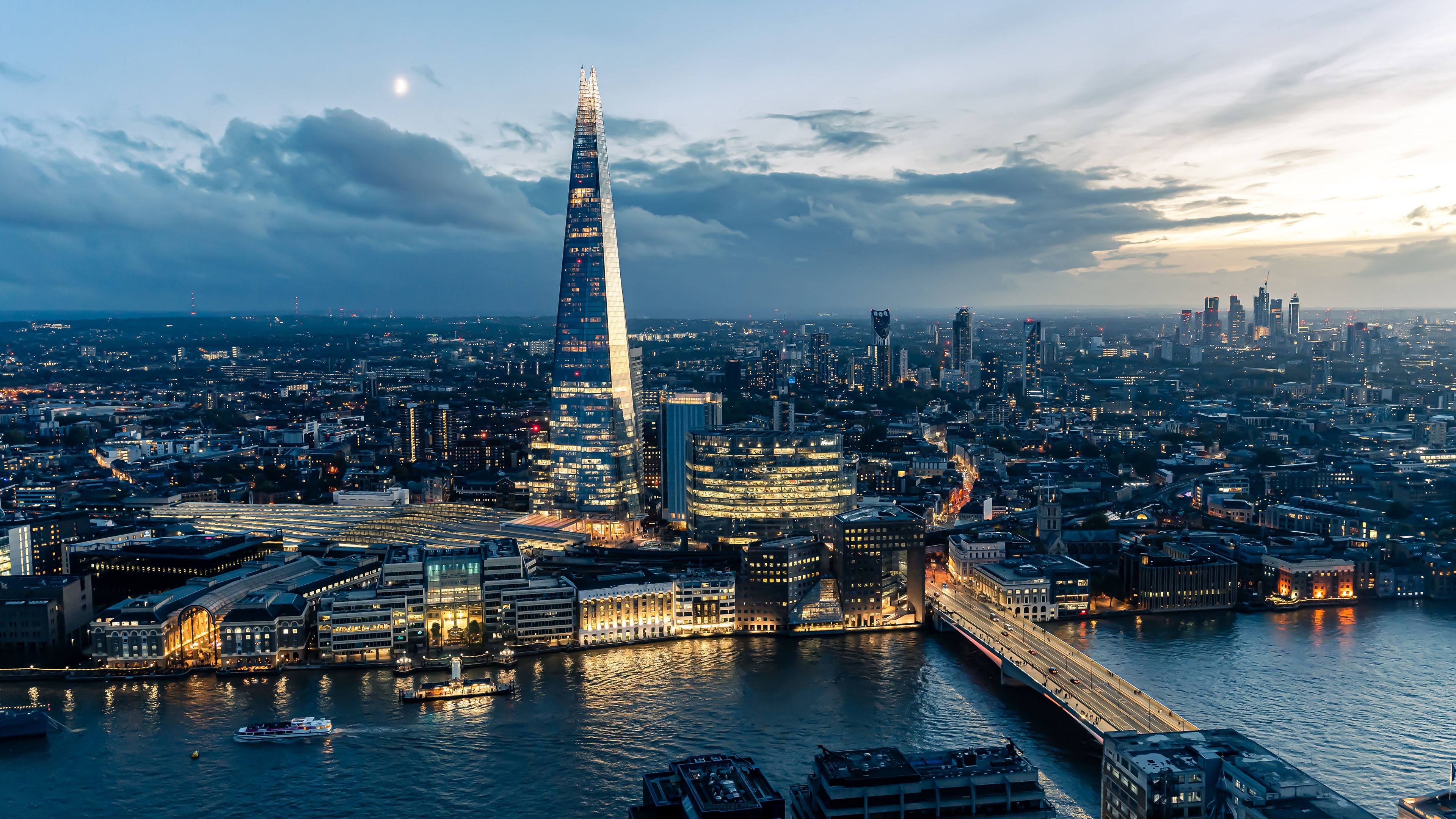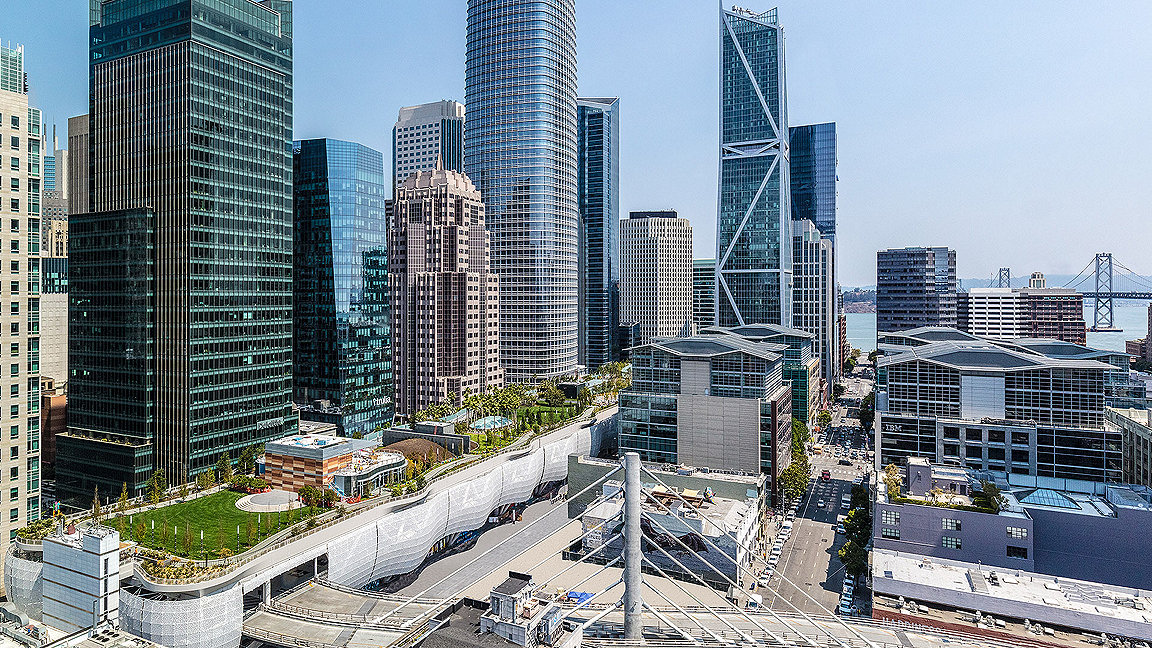
Photos by TJPA / Jason O'Rear
Snaking through San Francisco’s downtown, squeezing its way between the surrounding buildings over four blocks, is the $2.2bn Salesforce Transit Center.
Opened in 2018, it is a transport hub spread over six storeys – four of them above ground with offices, retail, and 37 bus bays. And then two basement levels, which are waiting for the completion of rail services that will connect downtown to Caltrain’s commuter train services and eventually California High Speed Rail. It was once dubbed ‘the Grand Central station of the west’ and its crowning glory is the 5.4-acre rooftop garden with 13 botanical areas.
Developed by the Transbay Joint Powers Authority (TJPA), it was designed by Pelli Clarke and Partners, and sits beside the city’s tallest building, the 61-storey Salesforce Tower.
However, it has not all been plain sailing for the long-awaited transport terminal. A New York Times article in December 2022 entitled ‘What comes next for the most empty downtown in America?’ highlighted the post-pandemic difficulties that San Francisco’s downtown area was facing. And what did it use to illustrate that article? An empty area of the Salesforce Transit Center.
The use of the image and the New York Times’ article content left Adam Van de Water, executive director at the TJPA, and architect Fred Clarke of Pelli Clarke, rattled. “You should never count out San Francisco,” says Clarke. Van de Water adds: “When you’re making an investment of this scale and time, it comes at, sometimes, great cost, and it’s very difficult to realise, but you’re taking the long-term view.”
There are no rose-tinted glasses from Van de Water or Clarke about the situation in downtown, however. Before COVID-19, the Transit Centre had 30,000 passengers each day; today they only say numbers are slowly building.
“The New York Times does take some pleasure in poking fun at San Francisco. But there is truth to the fact we don’t have the same office occupancy and foot traffic we did before the pandemic,” says Van de Water.
“There has been a major shift, and we’ll see how temporary it is. I would not say it was as busy as 2018-19 but I did read that article, and boy, that is a very bleak portrayal of what is happening here.”
Difficult beginnings
There have been hurdles to overcome in the development of the major transit hub from the beginning.
On 17 October 1989, a magnitude 6.9 earthquake hit the San Francisco Bay Area. It killed 67 people and caused more than $5bn in damage, which included the old Transbay Terminal, built in 1939.
In 1999, the decision was made to start the Transbay Programme, with the new development to follow the footprint of what was a freeway – the Embarcadero – taken down in 1991 following the earthquake. The TJPA was created in 2001, with the state handing over 13 development sites around the proposed Transit Center.
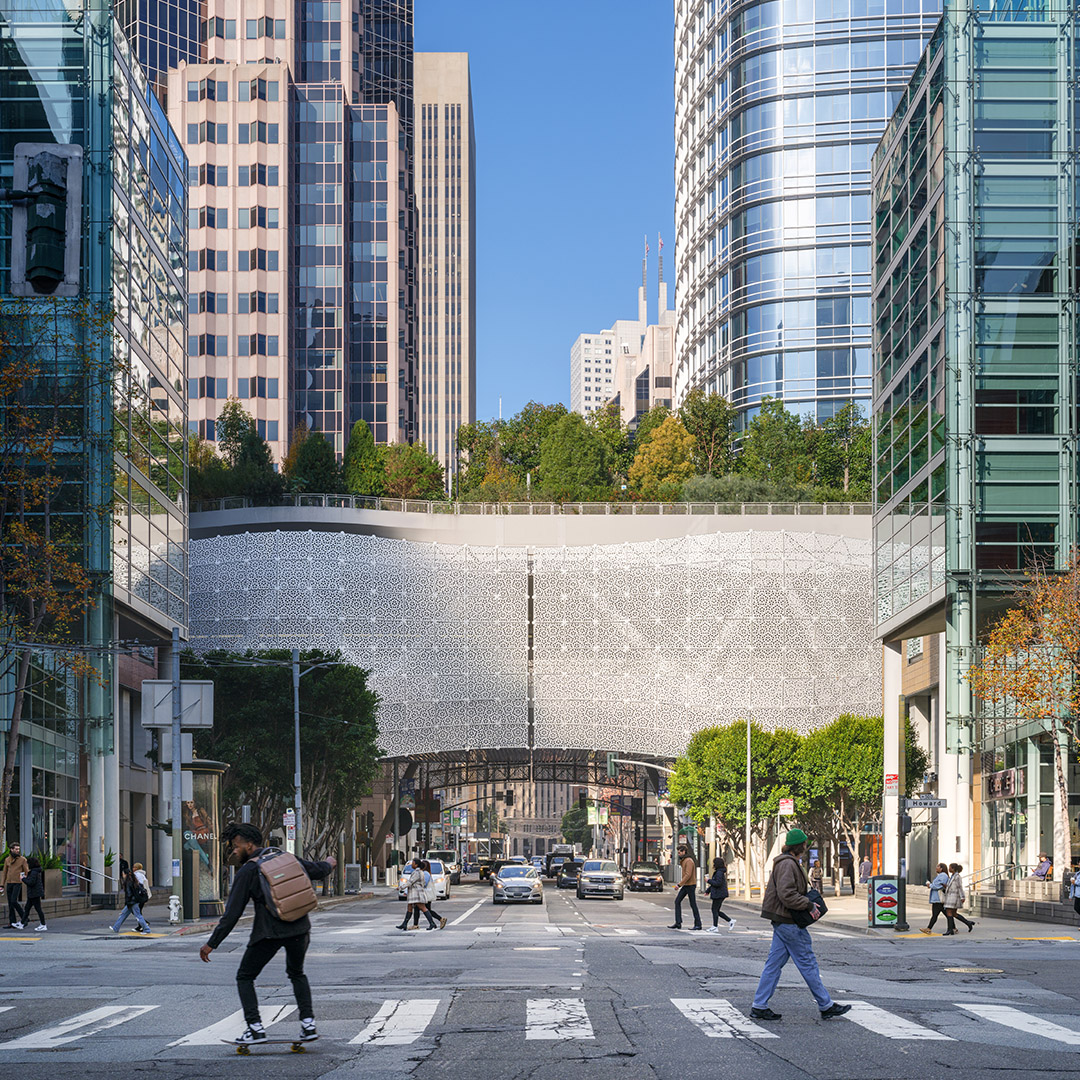
“To actually build it and see it used … my gosh, it’s just a glorious achievement” Fred Clarke, Pelli Clarke architects
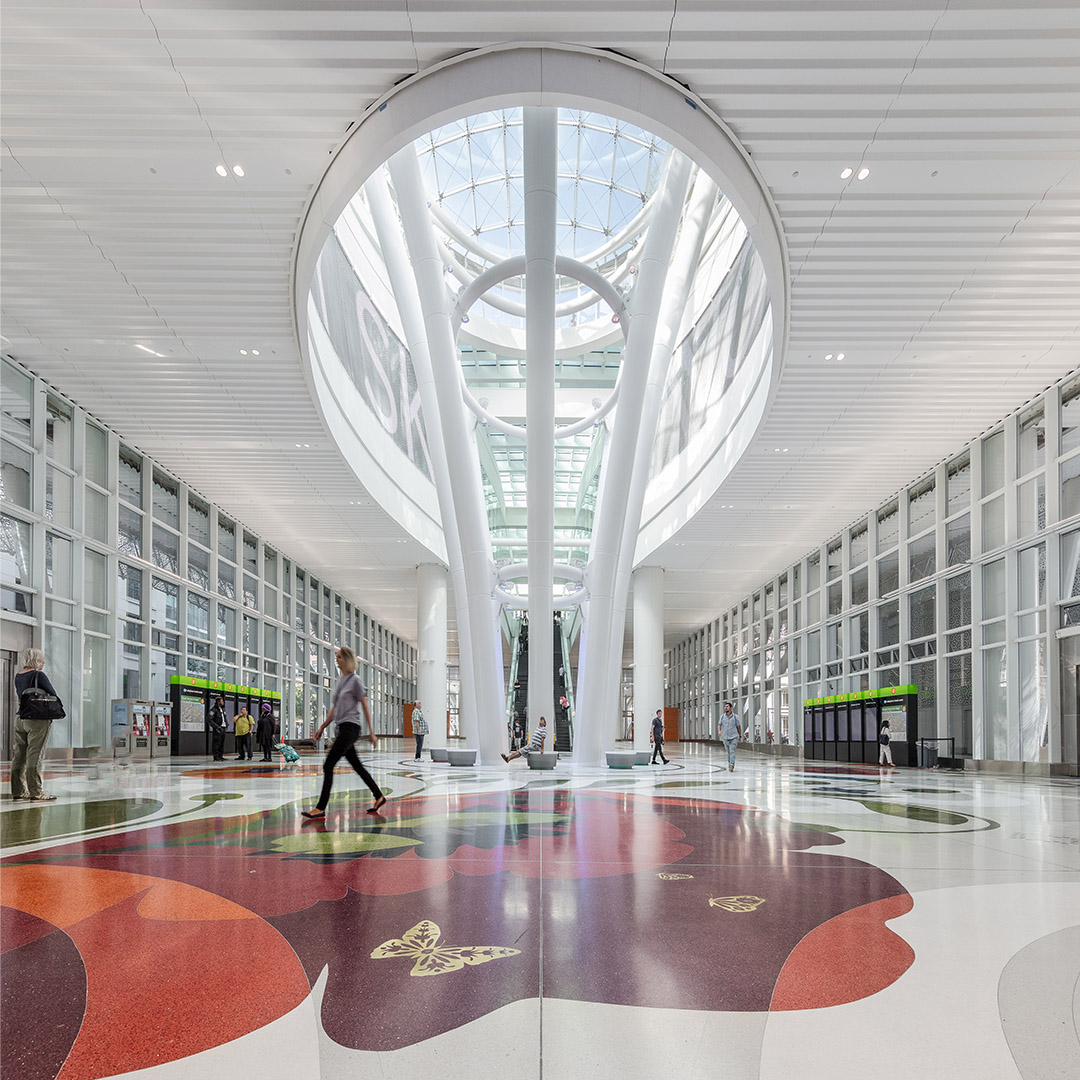
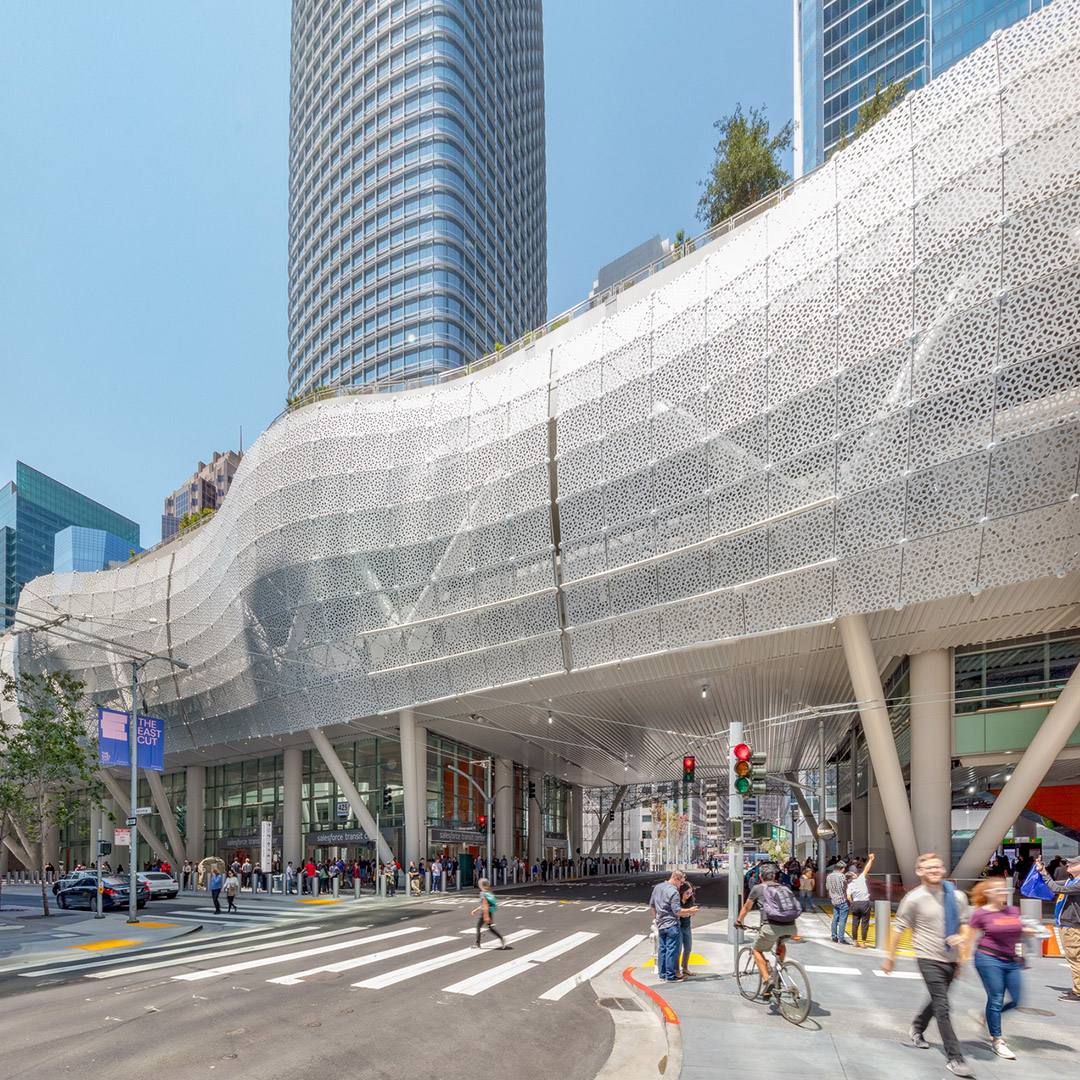
“This is a project being studied by many institutions as a model of what one would build in the future” Adam Van de Water, Transbay Joint Power Authority
During construction, negotiating the tight building area was complicated. “It was not only the tight space, but we had neighbours living right next to us,” says Dennis Turchon, senior construction manager for TJPA.
“We also had to keep traffic moving through the whole thing and be conscious of not impacting the commute, because the three streets that come through the Transit Center are some of the busiest in San Francisco.”
Finally, the Transit Center opened in 2018, but then closed within weeks because of concerns about a cracked steel beam. It only fully reopened in July 2019. And then the COVID-19 pandemic hit in March 2020.
A brighter future
Today the Center is fully functional and looking to the future. Only the two train lines need developing, and Van de Water says they are, “on the cusp of securing” funding. He also believes the large, multi-use Salesforce Transit Center, with its impressive roof garden, is the way all cities should be going: “This is a project being studied by many institutions, by many municipalities, particularly in China as a model of what one would build in the future.”
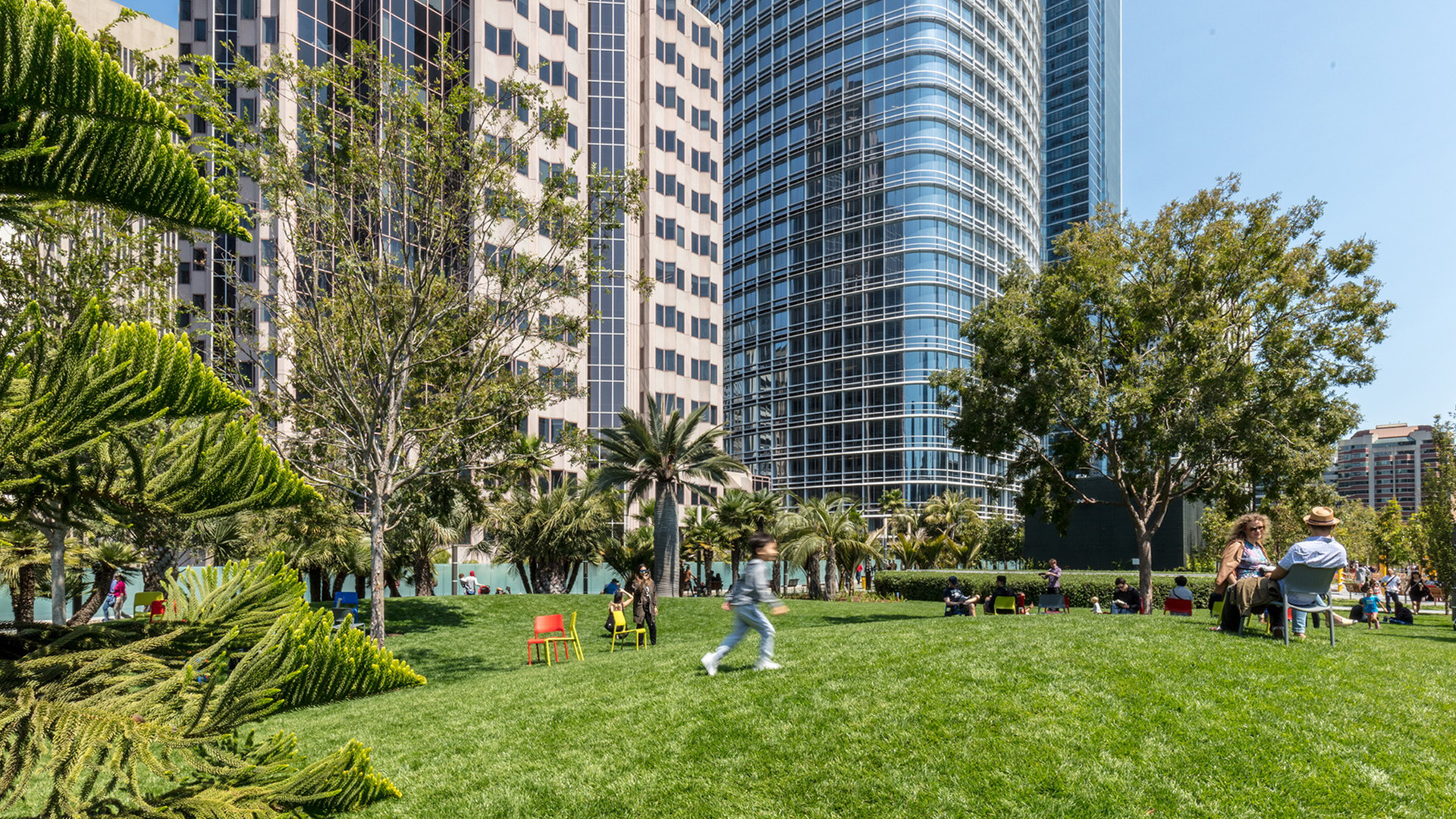
Clarke is more reverential about the scheme: “These things are miracles when they do get built. They can be dreamt of for decades but to actually build it, see it used, to have it there and measurable, my gosh, it’s just a glorious achievement. TJPA went through storm after storm to get the thing done and so this is a tribute to human aspiration and optimism. There’s no other way to put it.”
While one New York publication was less than kind about San Francisco’s downtown, another was more upbeat about the Transit Center – The New Yorker called it ‘a floating utopia.’
From the perspective of both Van de Water and Clarke, not everything is perfect in the city, but the Transit Center is not meant solely for today. It has been built with an eye on the future, the years and decades to come in which it can keep San Francisco’s inhabitants on the move and well connected.

